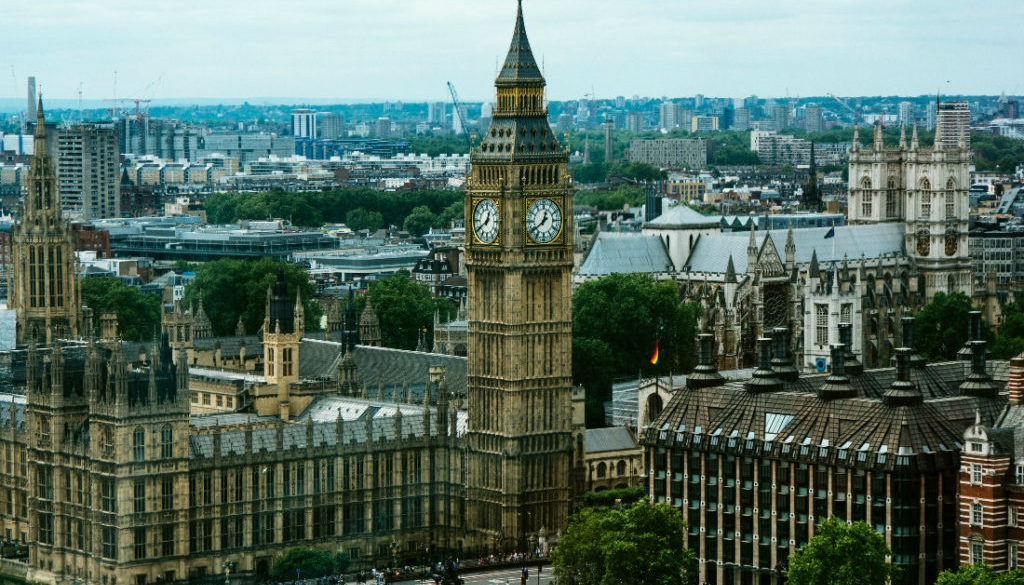Will the government’s new industrial strategy benefit rural communities?
Industrial Strategy is back – Theresa May featured it in her leadership speech as an economic reform “to get the whole economy firing” and now the Department for Business Innovation and Skills (BIS) has been elevated to the Department of Business, Energy and Industrial Strategy (BEIS). What does this return to industry/business focused policy-making mean for rural communities? Jessica Sellick investigates.
In a speech at the Royal Society in July 2016, Greg Clark (the then newly appointed Secretary of State for Business, Energy and Industrial Strategy) set out how the principles underpinning the Government’s science and innovation strategy – excellence, agility, collaboration between different disciplines and sectors, place, openness and internationalism – would inform the Government’s development of a new industrial strategy.
Intended to provide the means to enable the UK to build a long-term economic plan and increase competitiveness, what does the Government’s emphasis on delivering a partnership with businesses across all sectors actually mean? And what can we learn from previous industrial strategies? I offer three points.
First, what is an industrial strategy? As a starting point, it’s a strategic effort to encourage the development and growth of some or all sectors of an economy. In Britain it can be traced back to Robert Walpole, whom in 1721 introduced protections for infant industries by increasing tariffs on foreign competition. Walpole also lowered the duties on raw materials needed by British manufacturers.
A trend towards freer trade began in the late 18th century – amid a growing belief that cheap imports were the key to prosperity– and resulted in the introduction of an income tax act in 1842 to provide compensation for initial losses in Government revenue as tariffs came down.
By the 1930s the focus of industrial policy had moved on again, with a Coalition Government introducing a strategy of minimising competition, encouraging cartels and protecting businesses behind new tariffs. The 1934 Special Areas Act identified South Wales, Tyneside, West Cumberland and Scotland as areas with special employment requirements, with these areas seeing investment in infrastructure.
Post war, the Government sought to hold onto Britain’s traditional industries (textiles, steel and shipbuilding) with mergers to create nationalised and subsidised industries encouraged– and new bodies such as the Ministry of Technology and Industrial Reorganisation Corporation created. The need for an industrial strategy was reinforced by Tony Benn when he was Minister for Industry in the mid-1970s.
Then the Conservative led Government in the 1980s sought to break up nationalised industries and leave things to the free market. Gordon Brown, during the financial crash of 2008 and recession, led calls to rebalance the economy from an over-reliance on financial services towards industry and manufacturing.
George Osborne upon becoming Chancellor described this policy as the ‘march of the makers’. Sir Vince Cable (business secretary in the Conservative-Liberal Democrat Coalition Government) singled out eleven industries with whom the Government wanted to build long-term partnerships with – leading to the establishment of eleven Sector Councils.
From the 1720s to the present day successive Governments have made strategic interventions to drive the economy. These interventions have been horizontal (cutting across the whole economy), vertical (focusing on particular sectors) and/or spatial.
Where national industrial strategies have been pursued these have often come to the fore during periods of economic crisis or uncertainty; while at other times a free market approach has been followed – with the understanding that the market is the best mechanism to decide if businesses succeed or fail.
All of this opens up a series of debates around the role Government plays in economic development: should Government be interventionist or leave the economy to the free market? Should Government focus on specific companies, sectors, markets or only on the barriers deemed most important to the economy overall?
Should Government focus interventions on labour intensive products and services or in higher productivity industries? Should Government only intervene where there is market failure? What about (re)nationalisation – is this in the public interest and/or a legitimate use of public money?
Secondly, what kind of industrial strategy is emerging? In his speech back in July Greg Clark suggested the industrial strategy should be a number of things, including: (1) a long term, predictable and sustained approach to policy making; (2) actively engaging in creating an environment in which businesses can be founded, expand and prosper; (3) making connections between Government policy and business decisions, industries and places, research and practice; and (4) capitalising on strengths by seeking new opportunities. At first glance this seems an impossibly wide remit.
How will the Government reconcile the need for overseas investment in the UK to boost competitiveness yet reconcile that decisions may be made in board rooms thousands of miles away that may not do what’s best for workers, communities and the UK economy – will Government block a deal or impose conditions as per Hinkley Point C project? What can the private sector do to help address issues – working with Government – rather than asking Government to subsidise industries?
In August 2016, The Business, Innovation and Skills (BIS) Select Committee launched an inquiry into the Government’s industrial strategy. The Committee is seeking written submissions covering six areas: (1) what does the Government mean by industrial strategy and what does the private sector want from one? (2) How interventionist in the free market should Government be in implementing an industrial strategy? (3) What lessons can be learnt from previous Governments’ industrial strategies and from other countries? (4) What tensions exist between the objectives of an industrial strategy and the objectives of other policies? (5) What are the pros and cons of an industrial strategy adopting a sectoral approach? (6) Should the industrial strategy have a geographical emphasis?
Thirdly, what, then, might the Government’s emerging industrial strategy mean for rural areas? For me there are three main areas of focus: sectors, place and governance.
Sectorally – Defra’s Statistical Digest of Rural England, identifies agriculture, forestry and fishing; professional, scientific and technical services; and retail and repair of motor vehicles as dominant sectors in the rural economy.
The digest further highlights the role of small businesses in rural areas: while in urban areas 18.7% of people in registered businesses are employed in smaller businesses (of up to 9 employees) in rural areas this figure is much higher at 29%. In urban areas 28.6% of people are employed in registered businesses of 250 employees or more whereas in rural areas this figure is much lower at 15.1%.
How can we ensure rural businesses (of all sizes and sectors) are taken into account by the new industrial strategy?
Whether the strategy focuses on sectors, traditional industries and/or improving productivity, its development could provide new opportunities for Government to strategically consider how it can support the rural economy and lead other Government departments to design more effective and targeted policies for rural businesses.
Spatially – in his speech Clark described how “every business is located in a particular place”. He went on to highlight how transport connections, having a well-trained and educated workforce and pro-business leadership are conducive to prosperity.
In the Government’s science and innovation strategy ‘place’ is articulated in terms of how people and organisations benefit from mutual proximity – the clustering of resources in specific locations (i.e., cities/universities).
While there have already been calls to make sure the industrial strategy makes the most of cities and city regions, what is the most appropriate spatial unit(s) within which the strategy should sit and how can we ensure its geographical emphasis considers rural areas?
The strategy may provide opportunities for Government to take a territorial approach to economic development: one that helps people to find a job where they live (with rural areas retaining rather than losing young people, providing local opportunities to undertake training and skills development); improves access to services (health, adult social care, transport, leisure and entertainment) and advances mobile and broadband connectivity. In rural areas, the context is often different and this necessitates a different approach to policy-making. Should the industrial strategy move towards a more place-based approach?
Governance – the Select Committee chair Iain Wright has said “we…want to test how a new government industrial strategy fits in with its own devolution agenda, so that local, regional and national policies and strategies can be aligned as much as possible.” Ministers from BEIS have already become local growth champions and are tasked with building relationships with Local Enterprise Partnerships (LEPs).
More broadly, how will the new industrial strategy fit alongside Brexit, devolution deals, LEPs and Combined Authorities? The Institute for Economic Affairs (IEA), for example, has suggested as the UK will no longer be bound by European rules against State Aid it can readily choose to prop up loss making industries.
How are these different bodies going to work together so policy is coordinated across and within all levels of central and local government? In a previous set of rural words I explored how rural England was becoming a white space in the devolution agenda, how can we make sure rural areas are given the same opportunities for growth as their urban counterparts in developing a new industrial strategy?
Finally, it’s interesting to note how in the 18th and 19th centuries the United States and Germany took up parts of Britain’s industrial policy; in the 19th century Japan imported industrial policies and institutions from Germany; and in the 20th century China has adapted industrial policies from Japan. There may be much we can learn from looking at how other countries do industrial policy.
Will the Government’s industrial strategy reorganise existing policies and interventions or is a new relationship between Government and businesses emerging? And will rural have a place in it? Watch this space…
The RSN Seminar Programme starts in Swindon on 20 October 2016 on the theme of ‘rural economies’. For more information or to book your free place please contact events@sparse.gov.uk
Jessica is a researcher/project manager at Rose Regeneration; an economic development business working with communities, Government and business to help them achieve their full potential. She produces evidence bases for Local Authorities, Local Enterprise Partnerships and the governing bodies of designated landscapes. Jessica recently prepared two Community Led Local Development applications and completed a European project on the social value of volunteering into employment. Her public services work includes research for Defra on alternative service delivery and local level rural proofing.
Jessica can be contacted at jessica.sellick@roseregeneration.co.uk or by calling 01522 521211. Website: www.roseregeneration.co.uk, Twitter: @RoseRegen.



